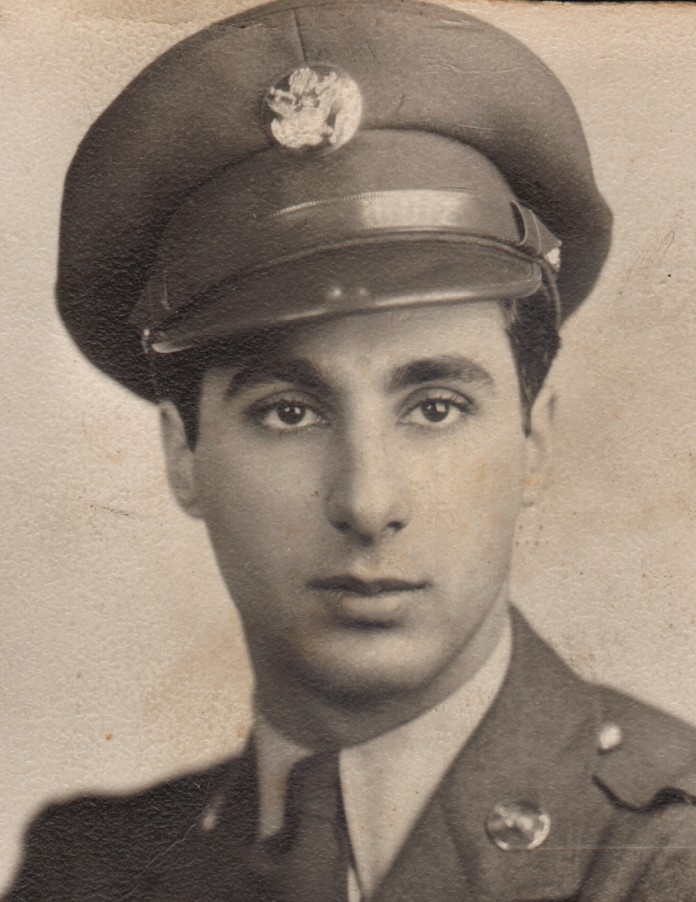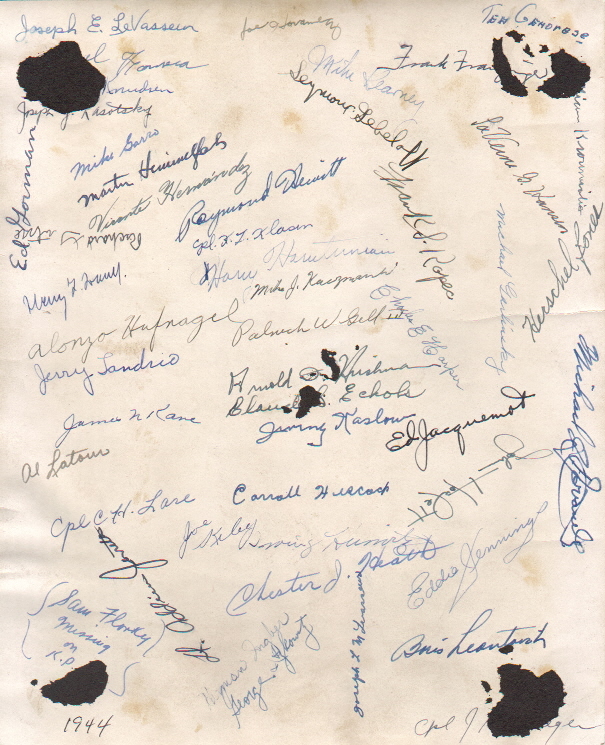Mario J. Genova
provided by family
These images were provided by
Mario's daughter, Donna Genova. She comments,
"I have always been very proud of my Dad, he was loving, strong, quiet, artistic and funny, I wish I did this sooner to honor him.
He never talked about being a POW until my daughter asked him to help with a school report, I guess the time was right to talk about it.
Also attached is the report in his own words and a picture of my Dad Mario J Genova."
"My Dad returned to Lake
Placid, NY and then to Bridgeport, CT where he worked as a mason and
married my Mom, Felicia in 1948.
He had 2 children and 4
grandchildren; that he loved dearly. Dad passed away July 10, 2000 at
the age of 79."


A group photo of Company C, 34th ITB in
February 1944. Mario is circled in the second row.
Click on the image for a larger version

This is the reverse of the photo shown
above, with soldier's autographs
|
I, Mario Genova, landed in Naples, Italy on April 18, 1944. My
outfit was the
85th Infantry Division
(ed: the old "Custer's Division", Company B of
the 338th Infantry Regiment); we went into
combat the next day. I was captured on September 13, 1944
between the Arno River and Florence. I was held a prisoner for
7 months; my camps were Mooseburg, Memmingen and Augsburg
Germany.
There were 10 of us that got captured on a mountaintop, the
Germans took us inside the mountain it had rooms all cut out and
pure white like salt or lime stonewalls. We were taken to
Florence, Italy and put on a truck with more American
prisoners. There was about 8 to 10 freight trains waiting, full
with prisoners from different countries, each freight car was so
full we had to sit in one place for 3 days and 3 nights with no
food or water. We got off at Munich, Germany and all prisoners
were shipped to
Camp Mooseburg, Germany. We had to work to
remove all the bombed out railroad tracks in Munich. American
bombers would drop bombs every day at 12:00 noon.
I was sent to
Memmingen with other prisoners, we had to get up
at 5:00 am and bury tons of potatoes in hay and dirt into big
mounds to keep as needed. Our workday was from 5:30 am until
6:00 p.m. with just one meal a day.
My next and last camp was in Augsburg, Germany, it was much
better. The last days of war all prisoners were on a death
march which we didn’t know until we were liberated by the 1st
Armored Division. We walked from Augsburg to Stuttgart,
Germany got onto a plane to Le Havre, France and a ship back to
the states |


